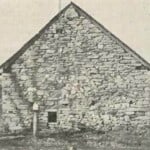
The Jaeger rifle is indeed a crucial chapter in the history of firearms, bridging the European and American traditions of gunsmithing. Its functional design, durability, and precision earned it a distinguished place in the annals of weaponry, both as an instrument for hunting and as a weapon of war.
Jaeger Rifle Historical Background: Additional Context
In a period when Europe was already a crucible for firearms innovation, the Jaeger rifle distinguished itself for its specialized function. While most firearms of the late 17th century were built with warfare in mind, the Jaeger rifle had a more specific, though no less challenging, mission: to provide an accurate and reliable tool for hunters in the dense forests of Central Europe.
This hunting focus led to several significant innovations in design and manufacturing. For example, the shorter barrel allowed for more maneuverability in close quarters, and the caliber size was substantial enough to bring down large game. By the 18th century, when the rifle reached American shores, the Jaeger had already undergone several refinements, adapting to various regional hunting needs.
Development and Design: The Nitty-Gritty
When talking about the Jaeger rifle, it's vital to appreciate the intricacies of its craftsmanship. Expert gunsmiths meticulously carved the barrel and rifling to ensure exceptional performance. Many of these artisans would spend an incredible amount of time achieving the perfect balance and weight, all the while ensuring that the bore and rifling were machined to exacting specifications. The spiral rifling grooves within the barrel were typically cut with a helical twist of about one turn in 60 inches, although this could vary.
Performance Characteristics
Given its specialized design, the Jaeger was remarkable for its accuracy at relatively long ranges, often effective up to 200 yards. This was almost unheard of for other firearms of the period. The heavy, elongated bullets could maintain their velocity better over distance, and the rifling kept the projectile on a straight flight path. This deadly combination of accuracy and power made the Jaeger highly effective, whether for hunting or in military engagements.
The ignition system of the Jaeger rifles was typically flintlock, a reliable and widely-used mechanism of the time. This system offered a quicker lock time compared to earlier ignition systems, enhancing the rifle’s accuracy further. The flintlock mechanism consisted of a flint clamped in the jaws of the cock (hammer), a frizzen (striker), and a pan that held the priming powder. When the trigger was pulled, the cock would strike the frizzen, sending sparks into the pan and igniting the priming powder, which in turn ignited the main charge in the barrel.
Use and Significance: On and Off the Battlefield
While its primary purpose was for hunting, its military applications could not be ignored. The rifle was especially useful in irregular and guerrilla warfare that characterized many conflicts in the New World. In the American Revolutionary War, specially formed rifle units wielded the Jaeger and its American variants. These units were adept at using the natural landscape for cover, compensating for the Jaeger's slower reload time compared to the British Brown Bess muskets.
The rifle's superior accuracy also enabled new tactics like targeted shooting at officers, which disrupted enemy morale and command structures. In the dense forests and rough terrains where many Revolutionary War battles occurred, the Jaeger rifle was far more suitable than its smoothbore counterparts. Some British units, recognizing the merits of the rifle, even adopted captured Jaeger rifles for their own sharpshooters.
Successors: The Birth of an American Icon
The Jaeger laid the foundation for the Pennsylvania or Kentucky rifle, which became an iconic American weapon. While the Jaeger was well-suited for European forests, the open landscapes of the New World necessitated a firearm with even longer range. The American longrifle featured a longer, more slender barrel and a smaller caliber, often around .40 to .50, compared to the Jaeger’s .50 to .65. The longer barrel allowed for greater accuracy at the increased distances encountered in the Americas, and the smaller caliber made the rifle lighter and easier to carry, essential traits for frontiersmen and settlers covering vast territories.
Conclusion: A Lasting Legacy
The Jaeger rifle, in its ingenuity and effectiveness, serves as a testament to the heights that artisanal craftsmanship can reach. With roots deep in the European hunting tradition, it found a new home and purpose in the Americas, shaping the course of history along the way. From the Battle of Saratoga to the untamed frontier, the Jaeger and its successors left an indelible mark on both sides of the Atlantic, and its principles of design continue to influence firearm manufacturing to this day. A masterpiece of balance, durability, and precision, the Jaeger rifle's legacy is well-ensured, standing as a pivotal chapter in the expansive history of firearms.
Join the conversations on this rifle and many more at the forums here.
A book with essays and articles on the Jaeger Rifle can be found here:

If you know of any forums or sites that should be referenced on this listing, please let us know here.



